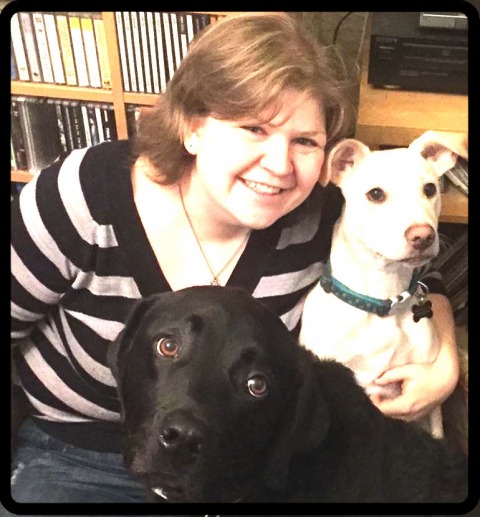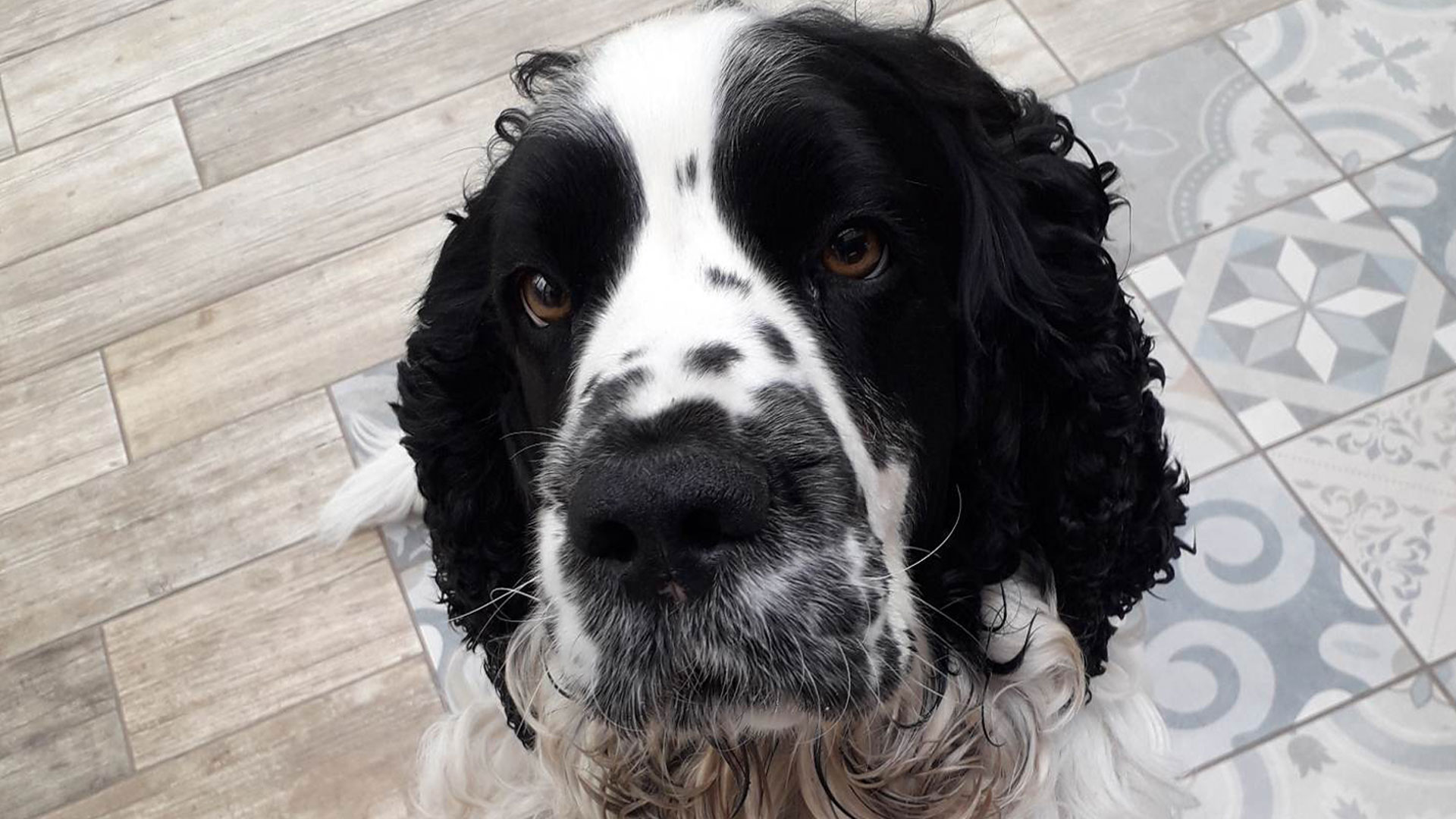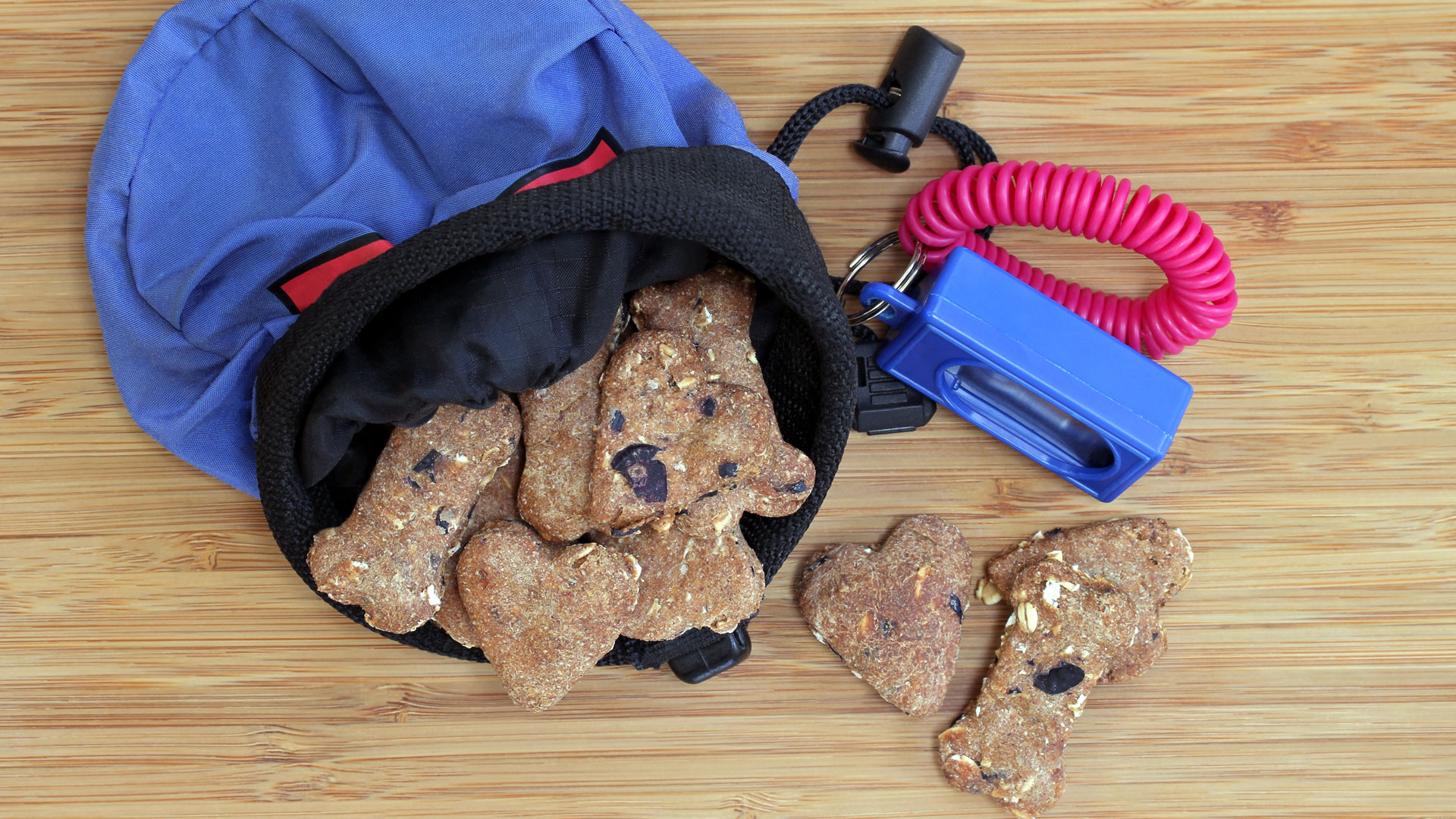I tried clicker training with my spaniel and had a breakthrough moment
Need a way to communicate clearly with a distractible dog? Clicker training could be the answer

If you’re interested in dog training then you’ve probably come across the term ‘clicker training’ at some point. Having owned dogs for years I’d heard of this technique but wasn’t sure what it was all about. Turns out it’s a form of positive reinforcement training which means that your pooch will be rewarded for showing desirable behavior. The technique involves using the clicker – a small box that makes a loud click – to mark and then reinforce behavior.
My English Springer Spaniel, Olly, is typical of the breed in that he’s lively and curious. While he’s mostly a very good boy, he does get distracted easily – especially if there are any squirrels around! He's fairly good at sitting and staying to voice commands, but a bit unreliable about sitting at a distance and lying down. I wondered if clicker training for dogs might be a clear and consistent way of keeping his attention focused on me.
I asked Clare Brewin, an APDT UK trainer who specializes in using positive reinforcement methods, for her thoughts.
“Clicker training definitely works well around distractions when compared to other methods - the noise seems to cut through background sounds far more effectively than our voices alone do,” explains Clare. “You also find that because the dog feels super happy when he hears the click when he’s been training at home, the clicker then naturally causes a dopamine release - in the same way that you might feel happy on hearing the first note of your favorite song, even before the rest of the music plays. If you’d heard that same song for the very first time when already distracted it may not have the same effect, but because you’re already emotionally connected to the music it causes an immediate dopamine release.”

Clare Brewin is an APDT UK trainer in Manchester, England who specializes in small group pet dog training classes using positive reinforcement methods. She has a BSc honors degree in animal behavior and is a full member of the APDT (Association of Pet Dog Trainers), one of the most rigorous qualifications available. After working in dog shelters for some years, Clare decided to use her skills to help owners understand and bond with their own dogs, so started up her business CB Dogs in 2011. She’s careful to keep up to date with cutting edge scientific research into the field of dog training and believes that a good trainer never stops learning. Clare trains using positive reinforcement, a method scientifically proven to not only speed up training but also to create an enjoyable interaction between handler and dog, meaning you both look forward to each and every bit of training you do.
How does clicker training work?
The first thing I had to do was to buy a clicker – these are readily available online for a few dollars like these from Amazon. Armed with this and some small but tasty treats, we were ready to start. The first step of training is getting the dog used to the sound of the clicker and the association with a reward, which could be food, a ball, or a fun activity depending on what motivates your individual pooch.
As I have a spaniel who likes to tell me he’s perpetually starving, I decided food would be easiest. I clicked the button and tried to give the treat immediately after, which he thought was a great game. “The click should come just before the treat,” says Clare. “Click first before reaching forwards with the treat, as otherwise, the movement of your hand will become the indicator rather than the noise. A lot of dogs respond well to the unique sound of the clicker and pairing with a reward makes that response stronger.”
The first thing I noticed was that Olly almost instantly started paying attention to the sound of the clicker. His ears cocked, his head tilted and he seemed to focus on it immediately. Time to move on to step two – we were clearly going to be great at this!
Get the best advice, tips and top tech for your beloved Pets

How hard is clicker training to do?
Unfortunately, the next step was much harder. I asked Olly to lie down by offering a treat and gradually moving it down and forward until he was completely on the floor. The idea was that as soon as his tummy hit the floor I should click the button and offer the treat to reinforce the behavior, but I found the timing very difficult. I was constantly either too slow or too fast, meaning I was rewarding the wrong thing. After 15 minutes, Olly was released from school and took himself off to chase squirrels, while I went to practice my clicker timing.
“Clicker training definitely takes a bit of practice to get the timing right!,” laughs Clare. “Try imagining you’re photographing the desired behavior to show your dog what you’d like them to repeat. Press the clicker at the same moment you would press the camera button to take the photo.”
As well as my timing issues, I also had a tendency to wave the clicker around, which would be distracting for any dog. Instead of pointing it at my poor pooch like it was a remote control, I should have been keeping my clicker hand close to my side or even behind my back or inside a pocket, while the other hand held a treat ready. Eventually, though, I was ready to try again.
This time, I was much sharper with my clicking, and Olly clearly recognized it as a positive sound. He was soon lying down quite happily with the click and reward system, and I wondered if I could now stop the treats. Clare soon put me back on track, though.

“A common misconception is that eventually, you don’t need to reward the dog after the click,” Clare explains. “It’s not that the click becomes the reward, but rather that dogs learn to associate whatever they were doing when they heard the click with getting the reward. Clicker is great for the teaching process as it helps the dog understand EXACTLY what they need to repeat to gain their reward, but if you fade the food out, eventually the effectiveness of the click will also reduce as the dog no longer links it to something desirable. When your dog is established you can stop rewarding with food every time and sometimes use a different reward such as praise, but when training, a click should always lead to a treat.”
I liked this training method, as it enabled me to give a clear, consistent marker that wasn’t affected by outside factors such as my tone of voice, mood, or choice of words. Olly seemed to respond well to it too, and was clearly listening to the clicks with great concentration. While you do need a clicker, they’re cheap and easy to obtain. If you’re just starting out, though, a couple of sessions with a qualified trainer is a great investment to get you on the right track.
“I believe that reward-based training is the most effective, ethical, and enjoyable way to train a dog,” says Clare. “Clicker is a type of ‘Mark and Reward’ training and can work with any dog as it’s a simple way of communicating clearly. Eventually, it becomes almost second nature to click when your dog does something you’re going to reward. Ask an experienced clicker trainer to guide you through the process, as this can really make all the difference to your success.”
In need of more training ideas for your pooch? Don't miss our vet-led guide to crate games for dogs.
Sara is a freelance journalist and copywriter of many years’ experience with a lifelong love of animals. She’s written for a range of magazines and websites on subjects varying from pet care to travel. A horse rider since the age of five, she’s currently a full time pet slave to horse Blue and gorgeous, goofy English Springer Spaniel Olly. Adorable Olly has a huge sense of adventure and no sense of direction, keeping Sara on her toes.

